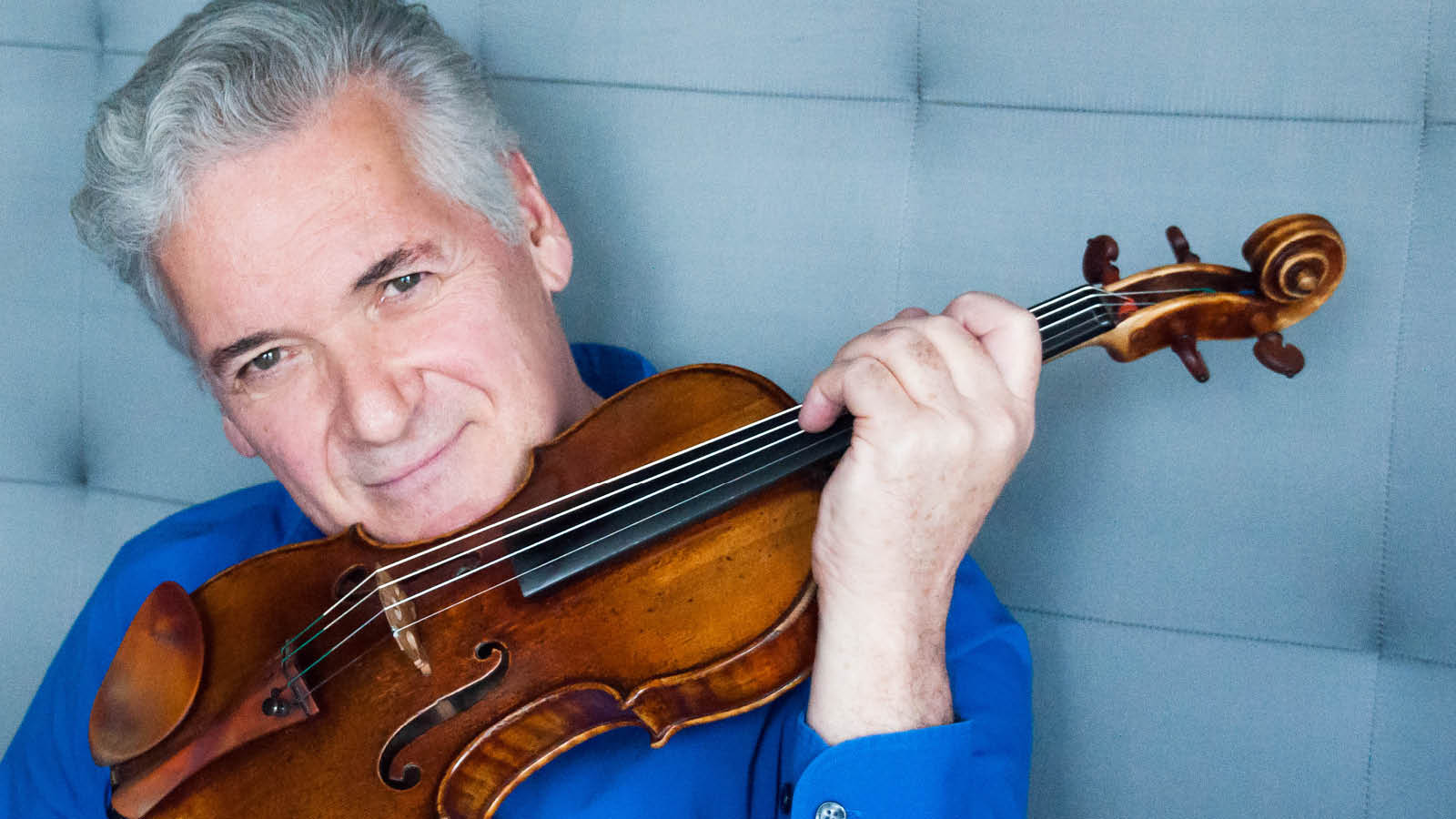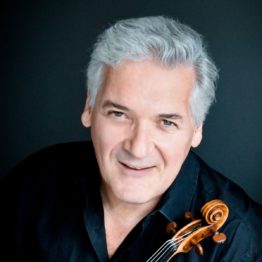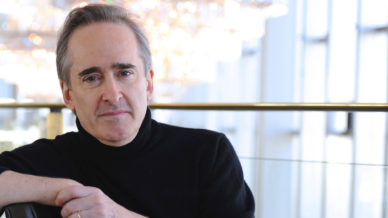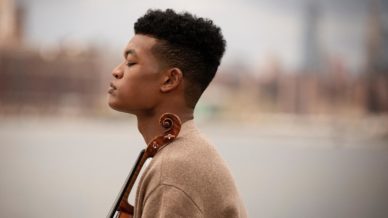

Pinchas Zukerman
January 19 – 22, 2023
PINCHAS ZUKERMAN conductor & soloist
BEETHOVEN Concerto in D major for Violin and Orchestra
ELGAR Variations on an Original Theme, “Enigma Variations”
Pinchas Zukerman reigns as one of today’s most sought-after and versatile musicians. He is renowned as a virtuoso, admired for the expressive lyricism of his playing, singular beauty of tone and impeccable.
Joins us as he plays and conducts Beethoven’s Concerto in D major, one of the most mentally and emotionally demanding violin concertos of all time, and the ever-popular Elgar’s “Enigma” Variations, featuring the beloved Nimrod variation. Involving 14 variations on the original theme, the whimsical concept is explored in sincere detail, allowing for a spirited finale following Beethoven’s technical masterpiece.


Program Notes
by René Spencer Saller
Beethoven’s Violin Concerto in D Major—his first and only violin concerto—was seldom performed during his lifetime. Luckily, 17 years after the composer’s death, it was rescued from undeserved obscurity by Joseph Joachim and Felix Mendelssohn, who, as soloist and conductor, respectively, performed the concerto so brilliantly that it quickly became a staple of the concert repertoire, as it remains today.
Beethoven wrote the D Major Concerto during the most productive period of his life. For years he had known that he was going deaf, a crisis that pushed him deeper into his work and invested it with a new expressive urgency. His so-called middle period (from approximately 1804 to 1812) is lousy with masterpieces. In 1806 alone, he finished the Leonore Overture No. 3, the Fourth Piano Concerto, the Fourth Symphony, 32 Variations on an Original Theme in C Minor, and the three Razumovsky Quartets. He also accepted a commission from the superstar violinist Franz Clement, whom he had known since 1794, when Clement was a 13-year-old prodigy. The Violin Concerto is dedicated to the virtuoso, and its first performance took place at a benefit concert for him.
The premiere, in December 1806, was not a success. The audience cheered Clement but seemed puzzled by Beethoven’s music. According to some contemporary accounts, Clement hammed it up by interpolating a splashy composition of his own, played on one string of his upside-down violin. Such show-biz shenanigans were common in the early 19th century and probably not the reason that the concerto flopped. It’s more likely that Beethoven’s chronic procrastination resulted in a substandard, under-rehearsed performance by the soloist and the orchestra—Beethoven was scribbling out revisions mere days before the scheduled concert. But even more daunting were the many liberties that he took with sonata-allegro form. Ridiculing the ruptures in continuity and the “needless repetition of a few commonplace passages,” an early critic darkly predicted that “if Beethoven will pursue his present path, he and the public will come to no good end.”
A Closer Listen
Right away, the concerto announces its consummate weirdness. It begins, unlike any concerto before it, with five soft taps on the timpani. Then the woodwinds introduce a serene melody, only to be interrupted by the violins’ strange mimicry of the timpani’s opening knocks. This rhythmic motif—sometimes four beats, sometimes five—recurs throughout the symphony, in many disguises, informing every melody and inspiring dozens of variations. After a lengthy orchestral buildup, the solo violin finally enters, playing a melody that has previously appeared only in tantalizing snippets. Its beauty aside, this solo is no show-off’s showpiece. Beethoven makes it clear that the soloist and orchestra are equal partners, with a shared goal.
In the lyrical Larghetto, serene strings float in a shimmering pool of G major. The theme surfaces, sung by muted strings, and the soloist spins out a series of increasingly complex variations.
After a brief cadenza, the last movement—played without pause after the central Larghetto—reveals itself as an unorthodox rondo. As it builds to a close, the finale generates a flurry of robust and virtuosic passages.
The son of a piano tuner and music-shop owner, Elgar grew up Catholic and working class in Worcester, England. Although his formal training was spotty, he learned to play the violin, bassoon, and organ and began composing at age 10. He became a freelance musician at 16, picking up orchestral and conducting gigs around Worcester and taking on the occasional violin pupil. In 1885, at 28, he succeeded his father as organist of St. George’s Church.
Four years later, he married Caroline Alice Roberts, the blue-blooded daughter of the late Major General Sir Henry Gee Roberts. A decade older than Elgar, Alice, as she preferred to be called, believed in her young husband’s genius and didn’t mind subsidizing it. Until 1899, when he finally found fame with Variations on an Original Theme (commonly known as the Enigma Variations), Elgar hustled in obscurity. Were it not for strong-willed, endlessly devoted Alice—who violated several social taboos when she married “below her station,” over the strenuous objections of her family—Elgar might not have had the leisure to compose.
Clues and Ciphers
The work that would finally make Elgar famous, at age 42, was a happy accident. After a long day teaching violin in Malvern, he liked to relax by improvising at the piano. Before long, he arrived at the tune he would later call “Enigma”; he knew he had his theme when Alice mentioned how much she liked it. He continued to entertain her by performing a series of variations inspired by their friends, beginning with Billy Baker (identified in the score as W.M.B.). Each variation is an attempt to channel a particular personality, to write in the distinctive styles that Elgar imagined his friends might employ were they “asses enough to compose.”
We now know the real-life counterparts for each of the 14 character sketches: from the composer’s wife (C.A.E.), to whom he whistled a special tune on arriving home each evening, to his great friend and champion Augustus Jaeger, here referred to as “Nimrod,” after the mighty hunter in the Bible, because his friend’s surname means “hunter” in German. Other variations are linked to colleagues, neighbors, and students, each subject characterized by the composer’s memories and impressions: the sweet stutter of graceful Dora Penny (“Dorabella”); the études of his viola student Isabel (“Ysobel”); the antics of George Sinclair’s clumsy bulldog, Dan; Lady Mary Lygon’s trip to Australia (listen for quotations from Mendelssohn’s Calm Sea and Prosperous Voyage).
For the finale he offers a self-portrait, labeled “E.D.U.” Alice’s nickname for him was “Edoo,” short for “Eduard,” an alternative spelling of “Edward.” Here he reprises themes from the “Nimrod” and “C.A.E.” variations, in honor of the “two great influences on the life and art of the composer,” as he wrote years later. It’s beautifully recursive: he describes them in music, then quotes from these musical descriptions to describe himself. He made them, maybe, but he’s also made of them.
Always Offstage
Although Elgar eventually confirmed the identities of each musical portrait, the wistful G-minor “Enigma” theme is eternally enigmatic. Over the years, music scholars have proposed countless sources for this melody, ranging from “Rule Britannia” to Mozart’s “Prague” Symphony, but all they can do is guess. As Elgar explained, the theme’s “dark saying” will always be a secret: “I warn you that the connection between the Variations and the Theme is often of the slightest texture; further, through and over the whole set another and larger theme ‘goes’ but is not played…. So the principal Theme never appears, even as in some late dramas… the chief character is never on the stage.”


